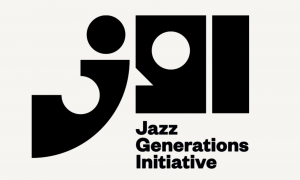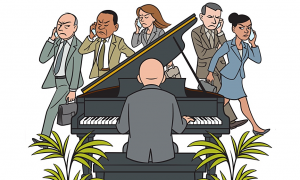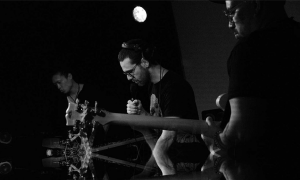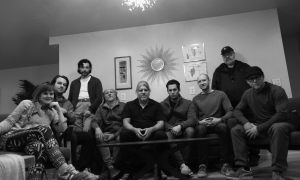As we can hear on Nat King Cole: Hittin' the Ramp, the Early Years 1936-1943, a new seven-CD box set from Resonance, Cole had a fresh interpretation of swing and pop early on as a pianist, composer and singer. What likely will surprise many listeners is how far back Cole's recording history goes and how much recording experience he had under his belt before Capitol signed him in early 1942. This hefty box features all of his pre-Capitol recordings, including his Decca dates and radio transcriptions.
Born in Alabama, Cole along with his three brothers—Eddie, Ike and Freddie—were taught there was only one way out of poverty for most black Americans then: the entertainment industry. In search of a better-paying job and refuge from the threat of racial terrorism down South, the Cole family moved north to Chicago in 1923 when Nat was 4. Nat learned to play piano from his church-organist mother, and singing came naturally to him.
As a teenager in Chicago, Cole gravitated to Louis Armstrong and Earl “Fatha" Hines, which makes sense. Both musicians were among the era's most spectacular and successful black jazz artists, and Cole was a hybrid of both Armstrong's please-'em pop and Hines's dashing keyboard style. And like Armstrong and Hines, Cole's delivery was inviting and easy to enjoy. This was especially critical during the Depression, when there was a vast market for highly optimistic recording artists who could buck up the down-and-outs, regardless of race.
As a result, the material on the Cole box's 1930s period is awash in pop novelty numbers flecked with jazz piano, guitar and bass. In some ways, it's impossible to fully understand this music today without knowledge of the stark poverty and hopelessness of the period. Record companies cranked out this stuff because that's what dancers and jukebox listeners wanted to hear.
When the Cole box inches toward the war years in 1940 and '41, the music sheds its jumpin'-jive tedium and we hear Cole's sensitivity and sparkling swing piano. This is when the box becomes more interesting. For example, Off the Beam (1940), the set's first turning point, shows off the King Cole Trio's sleek and inventive jazz chops. At the start of the 1940s, as the country grew increasingly troubled by news from abroad and anxious about America's inevitable involvement, Cole's music began to drop it's rah-dah-dah vocals and focused instead on pianistic flourish. We also hear Cole's voice grow more serious on songs such as Nothing Ever Happens and You Send Me (both 1940).
Another turning point on the set is I'm Lost, a 1943 Excelsior recording, which provides us with a preview of Cole's Capitol output. Cole was first to sign with the new label in 1942 but was interrupted by the first musicians recording ban until 1943. We also have Beautiful Moons Ago and My Lips Remember Your Kisses, also recorded for Excelsior in 1943. Here, Cole's vocals are meant to put the country at ease. Important to remember during this period is that Frank Sinatra had become a solo act and the country's best-selling pop recording artist. As a solo, he was transforming the very definition of the male vocalist, shifting from the earnest, full-throated approach to a more sensual and relaxed conversational style. Cole knew success when he heard it, so he moved to a more soothing style as well to remain in the game.
Interestingly, Cole didn't evolve over these eight years. The country did, and Cole thrived by adjusting his talents. And because he was such an intuitive pop artist in touch with mass-market tastes, he adjusted several times along the way. The set's 183 tracks not only show off Cole's gifts but also confirm how dull he could be. Many of the vast number of 1930s tracks are painfully alike, as if stamped out in a factory. Even his hallmark thrown-dice piano introductions begin to grate.
But if you listen to these songs as three-minute impressions of the public's mood, the music becomes a reflection of the national sentiment. More remarkable, Cole's modernist swing and jumpin' jive set the tone for many artists who followed, including Charlie Parker, George Shearing, Louis Jordan and Les Paul and Mary Ford. By 1945, Cole's approach was in the creative bloodstream.
As we hear in this new box, Cole's pre-war cool had a fascinating evolution and influence. He was responsible for recording music that helped the country through several difficult periods. He's clearly the father of vocal R&B. And he's the first modern black artist to cross over to the mass market, where he began to chip away at the color barrier. This monumental box holds the music that modernized swing and inspired post-war jazz, R&B and pop. That alone makes it worthy.
JazzWax clips: Here's a mini-doc on the project...
As a footnote, here's Hittin' the Ramp in 1941. Listen to the introduction...
Talk about influence. Now here's Charlie Parker in 1954 playing I Get a Kick out of You. Again, dig the intro...
This story appears courtesy of JazzWax by Marc Myers.
Copyright © 2025. All rights reserved.




































